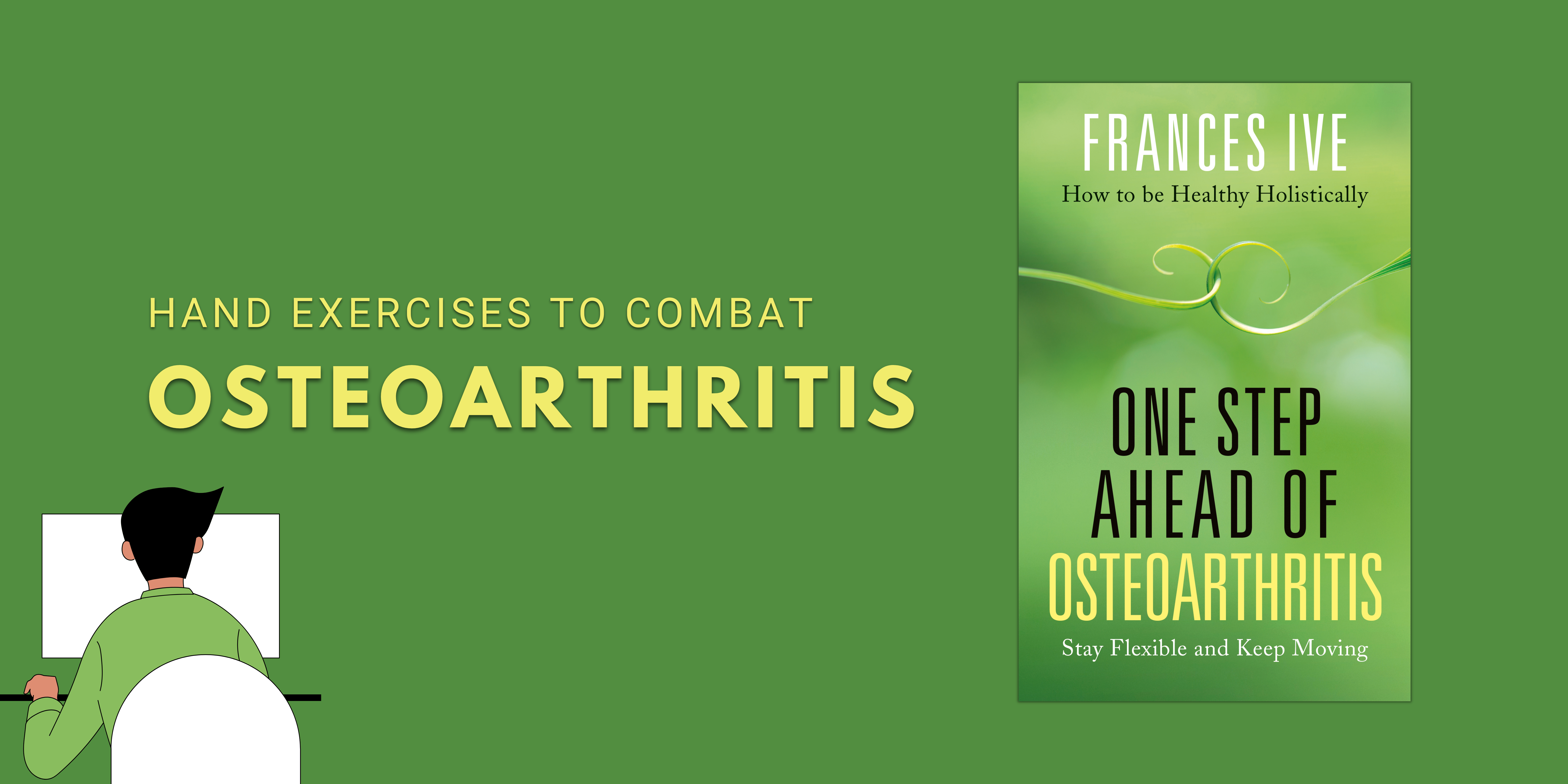
The following was written by the author of ‘One Step Ahead of Osteoarthritis’, Frances Ive.
Attention all keyboard users. One day you could get stiff, painful and knobbly fingers and thumbs, because of osteoarthritis, and one of the contributing factors is overuse of keyboards. No time is too soon to do regular (daily) exercises for the hands, to try to prevent building up problems for the future. Doctors have now been advised by NICE to recommend exercise to everyone when they get a diagnosis of osteoarthritis.
It’s true we use our hands too much and throughout history, those people who reached old age, would have had gnarly fingers, inflammation and pain. In the 21st Century we are building up even more problems with kids using keyboards from a young age and throughout their lives. Originally, typists bashed their fingers down on to the keys of manual typewriters, but now computer keyboards, phones and tablets are used so much at work and at home, adding even more pressure to our hands. And, when we use keyboards we put strain on our shoulders and arms as well and the tension radiates downwards to the hands. This results in pain and inflammation and sometimes immobility and inflexibility.
The pressure put on fingers by repetitive typing and key entry is astounding. Someone typing at 40 words per minute (wpm) uses 12,000 keys per hour and 65,000 keys during an 8 hour day, putting up to 25 tons (25,000 kg) of force each day on their hands. Add to that, using fingers and thumbs to send texts on a phone all the time!
Trying hand exercises may help to keep your fingers fit as you age. Stretching out the fingers, shaking our hands, squeezing a spongy ball or touching fingers to thumb are all good for keeping hands/fingers flexible and avoiding pain.
You can get osteoarthritis from 40, it is often hereditary, but also results from overuse of joints and the wearing down of cartilage (the protective surface at the end of our bones). Over 8 million people in the UK have osteoarthritis, of whom the majority are women.
Read more in One Step Ahead of Osteoarthritis, by Frances Ive
